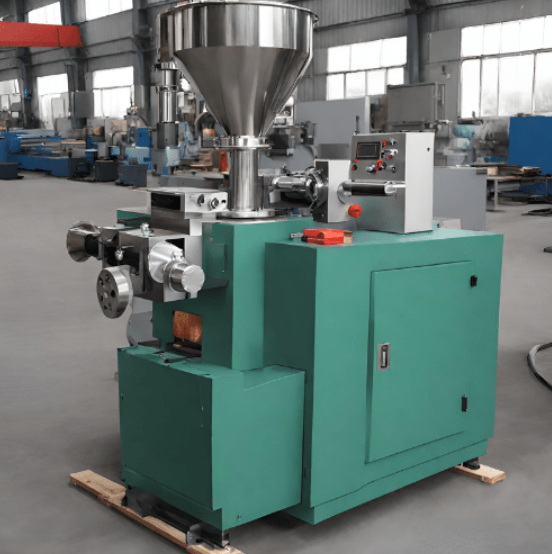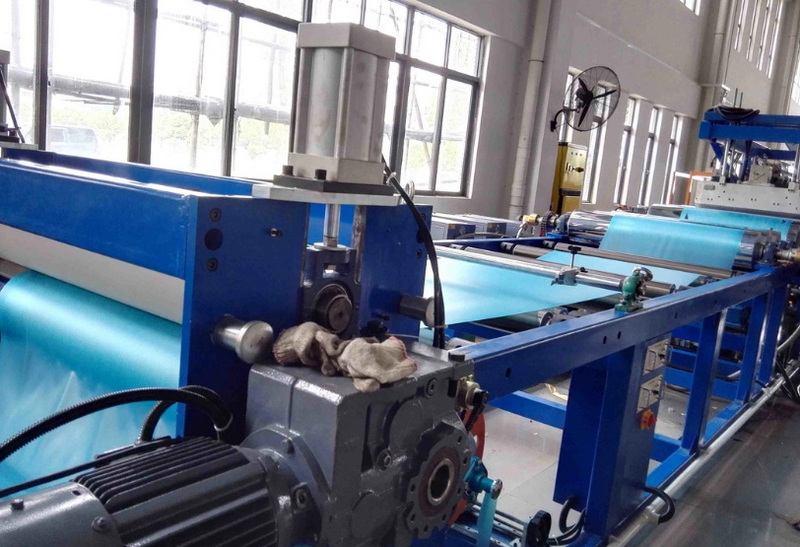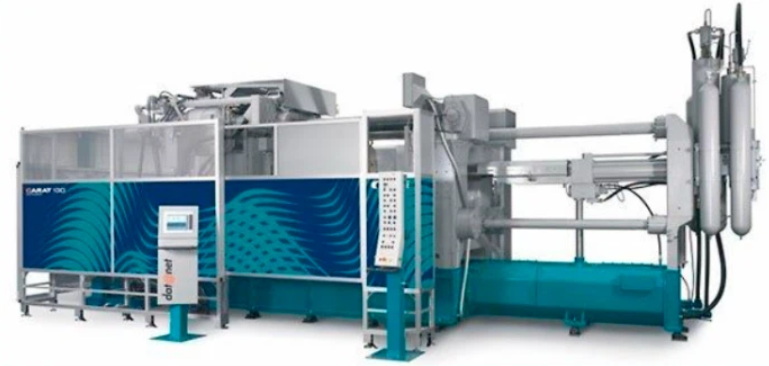Content Menu
● Introduction to Plastics Extrusion Machinery
>> Plastics Extrusion Machinery Inc (PEM) Overview
>>> Products and Specializations
● The Role of Other Key Players
>> Cowell Extrusion
>> Kabra Extrusiontechnik Ltd
>> Xtrutech
● Innovations in Plastics Extrusion Machinery
>> Recent Advancements in Plastic Extrusion Technology
● Applications of Plastic Extrusion
>> Packaging Industry
>> Automotive Industry
>> Construction Industry
>> Medical Industry
● Challenges and Solutions in Plastic Extrusion
>> Insufficient Material Flow
>> Uneven Product Quality
>> Material Degradation
>> Extruder Screw Wear
● Future Prospects and Trends in the Plastic Extrusion Industry
● Conclusion
● FAQ
>> 1. What is Plastics Extrusion Machinery LLC (PEM) specialized in?
>> 2. What is the plastics extrusion process?
>> 3. What are some key players in the plastics extrusion machinery industry?
>> 4. What innovations are happening in plastics extrusion machinery?
>> 5. How does PEM contribute to the plastics industry?
● Citations:
Plastics extrusion machinery plays a crucial role in the manufacturing of various plastic products, including pipes, profiles, and films. Among the leading companies in this field is Plastics Extrusion Machinery LLC (PEM), which specializes in providing innovative downstream equipment for the PVC pipe and custom profile industries. This article will delve into the specifics of what plastics extrusion machinery, particularly PEM, specializes in, along with an overview of the plastics extrusion process and the role of other key players in the industry.

Introduction to Plastics Extrusion Machinery
Plastics extrusion is a continuous process that transforms thermoplastic feedstock into a molten viscous fluid using heat and mechanical shearing. This fluid is then forced through a die to shape it into various forms such as pipes, profiles, sheets, and films. The machinery involved in this process includes extruders, dies, and downstream equipment like pullers, cutters, and cooling tanks.
Plastics Extrusion Machinery Inc (PEM) Overview
Plastics Extrusion Machinery LLC (PEM), often referred to in the context of plastics extrusion machinery, is a leading provider of downstream equipment for PVC pipe and custom profile manufacturing. Founded in 1978, PEM is headquartered in McPherson, Kansas, a significant hub for the plastics industry.
Products and Specializations
PEM specializes in a wide range of downstream equipment, including:
- Pipe and Profile Pullers: These are used to pull extruded profiles at a uniform speed to maintain their shape and size.
- Hydrostatic Testing Machines: Designed to test the integrity of pipes by applying internal pressure.
- Lift & Rotators: Used for handling and positioning heavy pipes and profiles.
- Chamfering Machines: For smoothing the edges of pipes and profiles.
- Vacuum Tanks: Essential for cooling and solidifying extruded products.
- Aftercoolers: Efficiently cool belled pipes.
- Precision Saws: For cutting profiles to precise lengths.
- Belling Machines: Used to flare the ends of pipes for easier connection.
- Unibundler Machines: For bundling multiple pipes together.
- Pipe Stacking Units: Designed to stack pipes efficiently for storage or transport.
The Role of Other Key Players
In addition to PEM, other companies play significant roles in the plastics extrusion machinery industry:
Cowell Extrusion
Cowell Extrusion is a professional supplier of polymer processing equipment with over 20 years of experience. They specialize in twin screw extruders, flat die extrusions, foam extrusion lines, and more.
Kabra Extrusiontechnik Ltd
Part of the Kolsite Group, Kabra Extrusiontechnik has over six decades of experience and is a leader in the extrusion market. They manufacture machinery for pipes, profiles, pipelines, and multilayer blown films.
Xtrutech
Founded in 2002, Xtrutech designs and manufactures twin screw extruders and other extrusion equipment for diverse industries, including thermoplastics, biopolymers, and pharmaceuticals.
Innovations in Plastics Extrusion Machinery
Innovations in plastics extrusion machinery focus on improving efficiency, reducing waste, and enhancing product quality. For instance, the development of more precise control systems allows for better dimensional accuracy in extruded products. Additionally, there is a growing interest in recycling technologies, such as benchtop extruders designed for small-scale plastic recycling:
Recent Advancements in Plastic Extrusion Technology
Recent advancements in plastic extrusion technology have significantly enhanced the process's efficiency and capabilities. One notable development is the integration of Industry 4.0 principles into extrusion machinery. This involves using smart sensors and IoT (Internet of Things) technology to monitor and control the extrusion process in real-time. Manufacturers can optimize production parameters, reduce downtime, and predict maintenance needs, improving overall productivity and reducing operational costs[1].
Another exciting advancement is the development of multi-layer extrusion techniques, which allow for creating products with varying properties in a single extrusion process. This technology enables manufacturers to produce films and sheets with barrier layers for enhanced performance, such as improved thermal resistance or mechanical strength. These multi-layer products are particularly valuable in the packaging and automotive industries, where specific material properties are essential for product performance[1].
Moreover, the introduction of advanced materials for extrusion has opened new avenues for innovation. Manufacturers can now work with high-performance polymers and composites, allowing for the production of lightweight, durable, and heat-resistant components. Bioplastics are also gaining traction due to the development of materials derived from renewable resources. These advancements meet industry demands and align with the growing emphasis on sustainability in the plastic industry[1].
Applications of Plastic Extrusion
Plastic extrusion is widely applied across various industries due to its versatility and efficiency:
Packaging Industry
In the packaging industry, companies use plastic extrusion to produce films, sheets, and other profiles used for packaging materials. The versatility of extruded plastics allows for the creation of packaging with varying thicknesses, barrier properties, and surface finishes. This adaptability makes plastic extrusion a suitable choice for developing packaging solutions that protect products, extend shelf life, and enhance visual appeal[2].
Automotive Industry
Extruded plastic manufacturing is applied in the automotive industry, contributing to the production of several automotive parts. Items like weather seals, gaskets, and interior trim components may use these extrusions. Vehicle tubing and hoses for fluid transfer systems also utilize extruded plastic. The manufactured parts offer resistance to chemicals, temperature variations, and UV exposure, increasing durability in diverse automotive applications[2].
Construction Industry
Extruded plastic manufacturing is applied in the construction industry, where parts can be seen in windows, doors, and other architectural elements. Extruded plastics are versatile, enabling the production of weather-resistant and thermally efficient profiles. This contributes to sustainable and energy-efficient building practices. The lightweight nature of extruded plastic components also simplifies installation processes, which may reduce overall construction time[2].
Medical Industry
Plastic extrusion can be utilized to manufacture tubing, catheters, and various medical device components. The ability to use a wide range of medical-grade plastics ensures compliance with specific regulatory requirements. The extrusion process also fosters complex and intricate profiles, meeting the particular needs of medical applications like microcatheters and guide wires[2].

Challenges and Solutions in Plastic Extrusion
Despite its advantages, the plastic extrusion process faces several challenges:
Insufficient Material Flow
Irregular material flow or blockages in the extrusion line can lead to production inefficiencies. Regular maintenance of the material feeding system, appropriate temperature and pressure settings, regular cleaning of filters, and calibration can help mitigate these issues[3].
Uneven Product Quality
Fluctuations in product quality due to uneven temperature profiles in extrusion can be addressed by regular monitoring of temperature profiles, proper calibration, and effective use of cooling systems[3].
Material Degradation
Degradation or color changes in plastic material due to overheating can be prevented by maintaining ideal extrusion temperatures and using cooling systems suitable for the material type[3].
Extruder Screw Wear
Wear or deformation of extruder screws can be minimized by using high-quality materials, regular maintenance, and periodic checks of screws[3].
Future Prospects and Trends in the Plastic Extrusion Industry
The future of the plastic extrusion industry appears promising, driven by ongoing innovations and shifting market demands. One of the most significant trends is the increasing focus on sustainability within the plastics sector. As consumers and regulators call for more environmentally friendly practices, manufacturers are exploring biodegradable and recyclable materials suitable for extrusion processes. This shift is expected to reshape product development and create new opportunities for extrusion technology[1].
Another trend is the adoption of automation and smart manufacturing practices. Integrating artificial intelligence and machine learning into extrusion machinery enhances process control and optimization. Predictive maintenance, real-time monitoring, and data analytics can significantly improve operational efficiency and reduce waste. As these technologies become more accessible, manufacturers will be better positioned to meet the challenges of a competitive marketplace[1].
Lastly, the demand for customization and specialized products is on the rise. Consumers increasingly seek tailored solutions that meet their specific needs, which presents a unique challenge and opportunity for extrusion manufacturers. The ability to produce small batches of custom products without sacrificing efficiency will be a key focus area moving forward, leading to the development of more flexible and adaptable extrusion systems[1].
Conclusion
Plastics extrusion machinery, particularly companies like PEM, plays a vital role in the production of PVC pipes and custom profiles. The industry continues to evolve with innovations aimed at improving efficiency and sustainability. As the demand for plastic products remains high, the importance of advanced extrusion machinery will only grow.

FAQ
1. What is Plastics Extrusion Machinery LLC (PEM) specialized in?
PEM specializes in providing innovative downstream equipment for the PVC pipe and custom profile industries, including pipe pullers, hydrostatic testing machines, and chamfering machines.
2. What is the plastics extrusion process?
The plastics extrusion process involves heating and melting thermoplastic feedstock, which is then forced through a die to shape it into various forms like pipes, profiles, and films.
3. What are some key players in the plastics extrusion machinery industry?
Key players include PEM, Cowell Extrusion, Kabra Extrusiontechnik Ltd, and Xtrutech, each specializing in different aspects of extrusion machinery.
4. What innovations are happening in plastics extrusion machinery?
Innovations focus on improving efficiency, reducing waste, and enhancing product quality. There is also a growing interest in recycling technologies like benchtop extruders and the integration of Industry 4.0 principles.
5. How does PEM contribute to the plastics industry?
PEM contributes by providing high-quality downstream equipment that helps PVC pipe and custom profile manufacturers improve their production efficiency and product quality.
Citations:
[1] https://abhiplastics.com/revolutionizing-the-plastic-industry-how-plastic-extrusion-machinery-is-changing-the-game/
[2] https://www.clarkrandp.com/6-common-applications-of-plastic-extrusion/
[3] https://deltaplastik.com/blog/challenges-and-solutions-in-plastic-extrusion-process
[4] https://www.transamshop.co.uk/blogs/news/future-plastic-extrusion-trends-2024
[5] http://www.adeptcorp.com/sustainable-plastic-extrusion-practices/
[6] https://www.jwellmachine.com/analysis-of-plastic-extrusion-technology/
[7] https://abhiplastics.com/revolutionizing-the-plastics-industry-a-comprehensive-guide-to-extrusion-plastic-machines/
[8] https://www.inplexllc.com/blog/overcoming-common-challenges-in-plastic-extrusion-projects/
[9] https://www.globenewswire.com/news-release/2025/02/05/3021359/0/en/Plastic-Extrusion-Machine-Market-to-Grow-at-4-7-CAGR-During-2025-2035-Boosting-Global-Industry-to-USD-12-343-2-Million-by-2035-Future-Market-Insights-Inc.html
[10] https://plasticextrusiontech.net/the-imperative-of-sustainability-in-the-plastic-extrusion-process/
[11] https://www.wevolver.com/article/extruding-plastic
[12] https://www.rocalextrusions.co.uk/news/applications-of-plastic-extrusion/
[13] https://www.bausano.com/en/press-and-news/common-problems-in-the-plastic-extrusion-process
[14] https://www.linkedin.com/pulse/plastic-processing-machinery-market-trends-growth-future-nagula-l14ec
[15] https://www.siliconeplastics.com/post/the-environmental-benefits-of-modern-plastic-extrusion-processes
[16] https://www.machinedesign.com/3d-printing-cad/article/55248644/redetec-high-risk-high-reward-investing-in-game-changing-plastics-extrusion-technology
[17] https://www.moldingmachinetepai.com/resources/plastic-extrusion-machines-introduction-types-application.html
[18] https://www.boyuextruder.com/Blog/plastic-extrusion-problems-and-how-to-solve.html
[19] https://www.futuremarketinsights.com/reports/plastic-extrusion-machine-market
[20] https://hunterplastics.com/role-of-extrusion-in-plastic-waste-recycling-eco-friendly-solutions






















